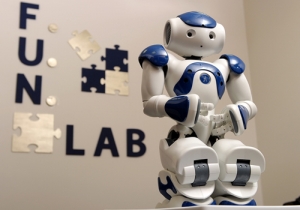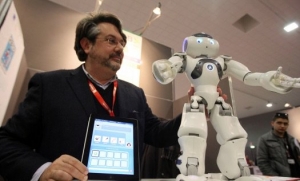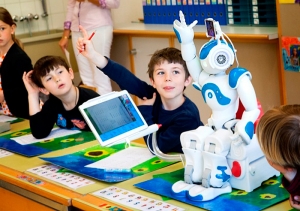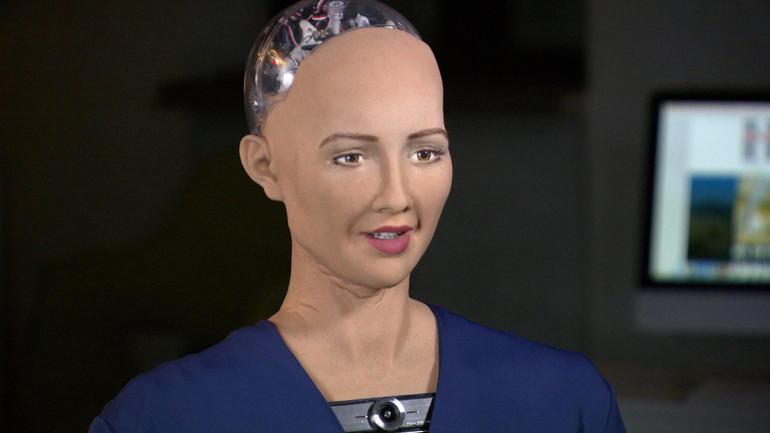Personalized Deep Learning Robots
for Autism Therapy
Children with autism spectrum conditions often have trouble recognizing the emotional states of people around them — distinguishing a happy face from a fearful face, for instance.It can be challenging for human observers to reach high levels of agreement about a child’s engagement and behavior. To remedy this, some therapists use a kid-friendly robot to demonstrate those emotions and to engage the children in imitating the emotions and responding to them in appropriate ways.
What is Autism?
Autism is known as a complex developmental disability. Experts believe that Autism presents itself during the first three years of a person’s life. The condition is the result of a neurological disorder that has an effect on normal brain function, affecting development of the person’s communication and social interaction skills. People with autism have issues with non-verbal communication, a wide range of social interactions, and activities that include an element of play and/or banter.
Personalized Machine Learning
The MIT research team realized that a kind of machine learning called deep learning would be useful for the therapy robots to have, to perceive the children’s behavior more naturally. A deep-learning system uses hierarchical, multiple layers of data processing to improve its tasks, with each successive layer amounting to a slightly more abstract representation of the original raw data.
Deep learning has been used in automatic speech and object-recognition programs, making it well-suited for a problem such as making sense of the multiple features of the face, body, and voice that go into understanding a more abstract concept such as a child’s engagement. “Deep learning allows the robot to directly extract the most important information from that data without the need for humans to manually craft those features.”

Idea for Autism Therapy
For the therapy robots, Rudovic and his colleagues took the idea of deep learning one step further and built a personalized framework that could learn from data collected on each individual child. The researchers captured video of each child’s facial expressions, head and body movements, poses and gestures, audio recordings and data on heart rate, body temperature, and skin sweat response from a monitor on the child’s wrist.

The robots’ personalized deep learning networks were built from layers of these video, audio, and physiological data, information about the child’s autism diagnosis and abilities, their culture and their gender. The researchers then compared their estimates of the children’s behavior with estimates from five human experts, who coded the children’s video and audio recordings on a continuous scale to determine how pleased or upset, how interested, and how engaged the child seemed during the session.
How It Work ?

Researchers at the MIT Media Lab have now developed a type of personalized machine learning that helps robots estimate the engagement and interest of each child during these interactions, using data that are unique to that child. It is suggest that robots are trained on human observations, as in this study, could someday provide more consistent estimates of these behaviors.
This type of therapy works best, however, if the robot can smoothly interpret the child’s own behavior — whether he or she is interested and excited or paying attention — during the therapy. Armed with this personalized “deep learning” network, the robots’ perception of the children’s responses agreed with assessments by human experts, with a correlation score of 60 percent.
Meet “NAO” The Robot
The researchers used SoftBank Robotics NAO humanoid robots in this study. Almost 2 feet tall and resembling an armored superhero or a droid, NAO conveys different emotions by changing the color of its eyes, the motion of its limbs, and the tone of its voice.Robot-assisted therapy for autism often works something like this: A human therapist shows a child photos or flash cards of different faces meant to represent different emotions, to teach them how to recognize expressions of fear, sadness, or joy. The therapist then programs the robot to show these same emotions to the child, and observes child as she or he engages with the robot. The child’s behavior provides valuable feedback that the robot and therapist need to go forward with the lesson.


Children’s Reaction
Most of the children in the study reacted to the robot “not just as a toy but related to NAO respectfully as it if was a real person,” especially during storytelling, where the therapists asked how NAO would feel if the children took the robot for an ice cream treat, according to Rudovic. Children reacted in various ways to the robots during their 35-minute sessions, from looking bored and sleepy in some cases to jumping around the room with excitement, clapping their hands, and laughing or touching the robot. One 4-year-old girl hid behind her mother while participating in the session but became much more open to the robot and ended up laughing by the end of the therapy. The sister of one of the Serbian children gave NAO a hug and said “Robot, I love you!” at the end of a session, saying she was happy to see how much her brother liked playing with the robot.
Why Humanoids not Humans
“Therapists say that engaging the child for even a few seconds can be a big challenge for them, and robots attract the attention of the child,” says Rudovic. Rudovic, Picard, and their teammates have also been using personalized deep learning in other areas, finding that it improves results for pain monitoring and for forecasting Alzheimer’s disease progression.

Robots attract the attention of the child says Rudovic, explaining why robots have been useful in this type of therapy. “Also, humans change their expressions in many different ways, but the robots always do it in the same way, and this is less frustrating for the child because the child learns in a very structured way how the expressions will be shown.”
“The long-term goal is not to create robots that will replace human therapists, but to augment them with key information that the therapists can use to personalize the therapy content and also make more engaging and naturalistic interactions between the robots and children with autism,” explains OggiRudovic, a postdoc at the Media Lab and first author of the study. Professors at MIT say that personalization is especially important in autism therapy.
Author :Ramya Swetha Bandaru
Source : MIT